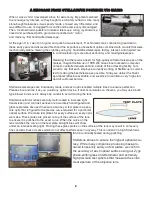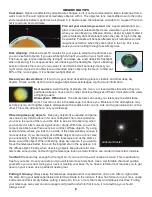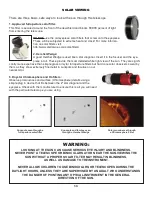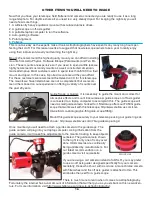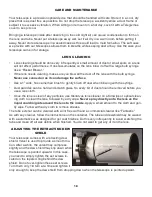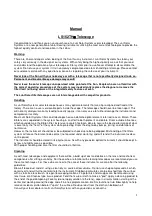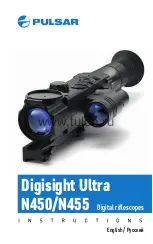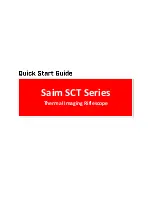
OTHER ITEMS YOU WILL NEED TO IMAGE
Now that you have your telescope, field flattener and camera connected you are ready to use it as a long
range telephoto. For daytime shots all you need is a very steady tripod. For imaging the night sky you will
need a few more things:
1. A sufficiently heavy equatorial mount with accurate dual axis drives.
2. A guide scope or off-axis guider.
3. A portable laptop computer to run the software.
4. Auto-guiding software.
5. Polar alignment.
6. Patience.
This is not as easy as the experts make it look. Astrophotographers have spent many many long hours per-
fecting their craft. For this reason we like to suggest that new telescope owners take a year to really enjoy
using their instrument visually and learning the night sky.
Mount: We recommend the highest quality mount you can afford including
mounts from Astro-Physics, Software Bisque (Paramounts) and Ten Mi-
cron. These mounts are expensive so if you need to spend a little less we
highly recommend Losmandy mounts as a well constructed American-
made alternative. Most customers want to spend less than $1000 on their
mount and tripod. In this case, imported mounts are all they can afford.
For these customers we recommend the Celestron VX for this telescope.
The mounts we have listed above are not a complete list but we recom-
mend them based on our experience in offering a variety of mounts over
the past 20 years.
Guide Scope or Guider: It is necessary to guide the mount and correct for
atmosphic effects and mount inaccuracies. A guide scope or off axis guider
is connected to a laptop computer to accomplsih this. The guide scope will
need a small guide camera hooked to it. Stellarvue offers our F050G guide
scope that works well with this telescope: http://www.stellarvue.com/stel-
larvue-50-mm-photographic-f50-guide-scope-f050g/
Mount this guide scope securely to your telesscope using our guide rings as
shown: http://www.stellarvue.com/r76lv-guidescope-rings/.
Once mounted you will need to attach a guide camera to the guidescope. The
guide camera will plug into your laptop computer. Using information from the
guide camera, it will make fine adjustments to the mounts tracking to keep objects
centered. The guide camera shown
to the right is only one of many avail-
able. CCD cameras are continually
being updated by manufacturers. For
our latest recommendation on a
guide camera visit our website.
If you are using a ccd camera instead of a DSLR, you may prefer
to use an off axis guider designed specifically for your camera.
Generally, those who shoot with a ccd use a monochrome camera
with filter wheel and the off axis guider is attached to this. This
eliminates the need for a guide scope.
There is much more to learn when it comes to astrophotography.
Fortunately, the internet has a vast amount of information that will help you as you embark on this new adven-
ture. For more information visit http://www.stellarvue.com/new-to-astrophotography/.
16
ZWO ASI-120

